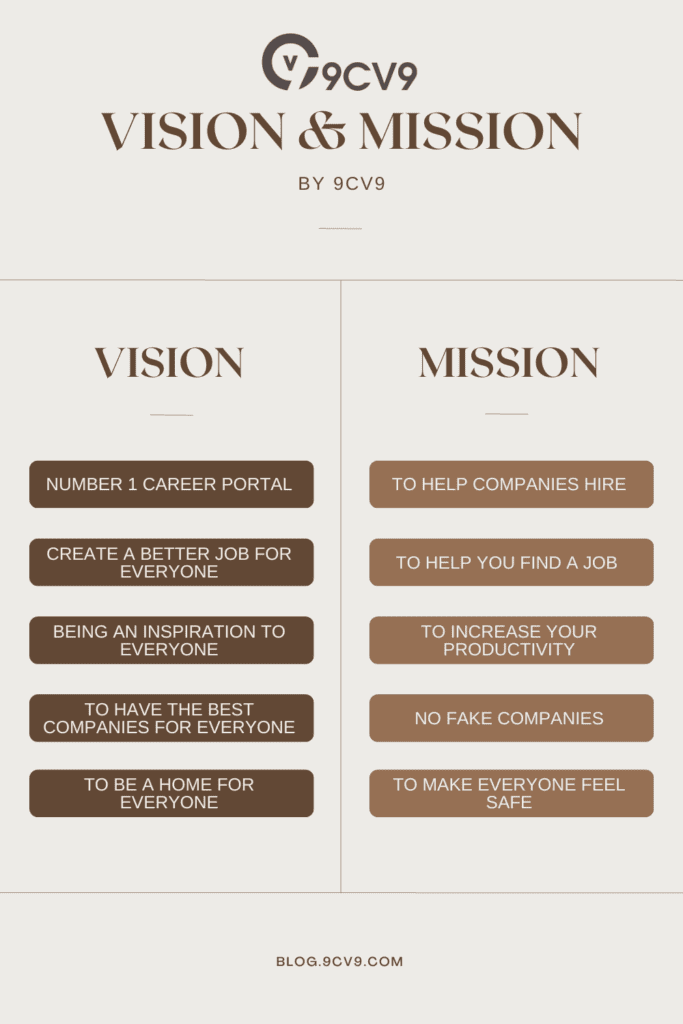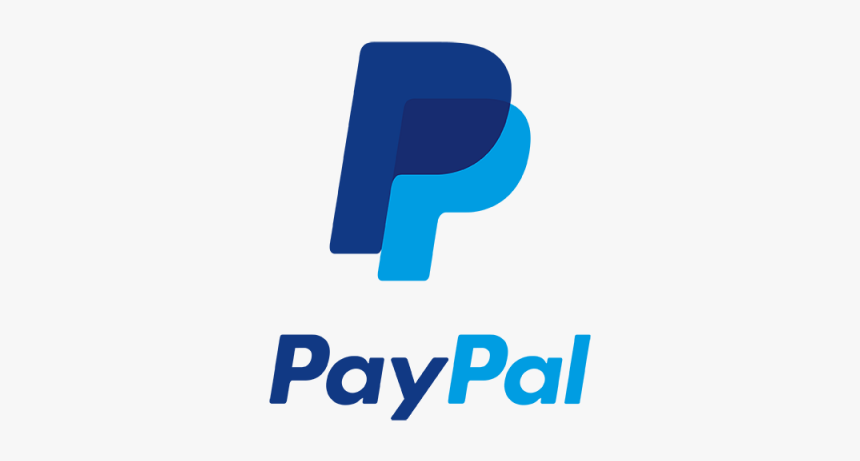To create a better everyday life for the many people
– IKEA’s Mission Statement
In today’s competitive business landscape, having a clear and concise mission statement is essential for any company’s success.
A mission statement is a brief, powerful statement that defines a company’s purpose, values, and goals.
It outlines what the company does, who it serves, and how it differs from competitors in one to three phrases.
It serves as a guide for all business decisions, from hiring and marketing to product development and customer service.
The statement is usually short. Consisting of a single sentence or a paragraph.
It’s intended to give employees focus, direction, and motivation. As well as to inform customers and clients about what to expect from your company.
A mission statement is sometimes part of a business plan.
Creating a strong mission statement is a critical step in developing a business strategy that is aligned with your company’s core values and purpose.
It provides direction and clarity for your team, customers, and partners, helping them understand what your company stands for and what you hope to achieve.
To create an effective mission statement, you need to start by defining your company’s purpose and identifying your target audience.
You also need to understand the value that your company provides to your customers and articulate your core beliefs and values.
Once you have a clear understanding of these key elements, you can craft a mission statement that is clear, memorable, and easy to understand.
In this article, we will walk you through the process of creating a mission statement for your company.
We’ll discuss the key elements that make up an effective mission statement and provide tips and best practices for crafting a statement that will resonate with your target audience.
We’ll also explore how to implement and refine your mission statement over time, ensuring that it remains relevant and effective as your business evolves.
Whether you’re starting a new business or looking to refine your company’s existing mission statement, this article will provide you with the guidance you need to create a mission statement that will help you achieve your business goals and succeed in today’s competitive marketplace.
Before we venture further into this article, we like to share who we are and what we do.
About 9cv9
9cv9 is a business tech startup based in Singapore and Vietnam, with a strong presence all over the world.
With over six years of startup and business experience, and being highly involved in connecting with thousands of companies and startups, the 9cv9 team has listed some important learning points in this overview of How to Create Your Company’s Mission Statement.
If your company needs recruitment and headhunting services, you can use 9cv9 headhunting and recruitment services to hire top talents and candidates. Find out more here, or send over an email to [email protected].
How to Create Your Company’s Mission Statement
- How Does a Mission Statement Works?
- What Is The Difference Between a Vision Statement and a Mission Statement?
- How to Make A Mission Statement?
- The Purpose of Your Mission Statement
- Examples of Inspiring Mission Statements
How Does a Mission Statement Works?

Mission statements have a double purpose.
For one, they keep their employees focused on the tasks at hand.
All while also inspiring them to think of new methods to boost productivity to meet your company’s goals.
The mission statement of a corporation establishes your company’s culture, values, ethics, core goals, and agenda.
It also explains how each of these factors affects the company’s stakeholders. Including employees, distributors, suppliers, shareholders, and the general public.
This statement can be used by those entities to align their goals with your company’s.
What the company does, how it does it, and why it does it are all explained in the statement.
Prospective investors can also look at the mission statement to check if the company’s beliefs match theirs.
Huge companies frequently spend years and millions of dollars developing and refining their mission statements.
In some cases, mission statements can become an everyday term.
Mission statements aren’t just for businesses.
A personal mission statement is something that many successful people, professionals, and investors have.
The statement is sometimes incorporated into the financial, professional, spiritual, and relationship aspects of their life.
As a result, the individual can achieve greater personal success in all of these areas by maintaining a healthy work and life balance.
A company’s identity is its mission, and its vision is its path to achieving that mission.
What Is The Difference Between a Vision Statement and a Mission Statement?

You may confuse the difference between a vision statement and a mission statement. Before you can figure out what your mission statement is, you must know the difference between these two.
The mission statement of your company should be different from its vision statement.
Both statements are similar in the idea of the broad outline. A mission statement is more focused on the present and intended to express the reason for your company’s existence to both the internal and external communities.
For the most part, the mission statement generally remains constant and represents who your company is or aspires to be for the period of its existence.
On the other hand, a vision statement is focused on the future and intended to motivate and guide your workers, rather than the customers.
It is subject to change with time. Since it specifies what your company must do to maintain its current image.
In consequence, a company’s identity is its mission and its vision is its path to achieving that mission.
A mission statement is a method to guide your company in the proper direction.
They contribute to your company’s ability to make better decisions.
Which can be profitable for your company.
Businesses can struggle to make decisions and plan for the future if they don’t have a mission statement to guide them.
Giving direction is one of the most significant advantages of a mission statement.
The mission statement also gives society a clear purpose for your company.
Having a clear objective may help to eliminate any potential doubts about your company’s existence.
People who are interested in the business’s progress, such as stakeholders, will want to know that your company is making the right decisions to move closer to your goals.
This will assist them to erase any doubts they may have about your company.
For example, below is some sample examples of Visions and Missions of 9cv9.

How to Make A Mission Statement?
While it may be hard to simplify your company’s focus into a short statement, here are some recommendations to help you create an effective mission statement.
1. Define Your Company’s Purpose
Defining your company’s purpose is the essential first step in creating a mission statement that will guide your business decisions and actions.
To define your company’s purpose, you need to ask yourself why your company exists.
What problem are you solving?
What need are you fulfilling?
What drives your business forward?
By asking “why?”, you can dig deeper into the heart of your company’s purpose.
What problem are you solving?
– 9cv9
Another crucial aspect of defining your company’s purpose is identifying your values.
What values do you and your team hold dear?
What values drive your business forward?
Identifying your values can help you create a mission statement that reflects your beliefs and goals.
Outline how your organization accomplishes its goals. Instead of becoming technical, consider what values are at the root of your company.
Perhaps you place a premium on quality, customer service, or sustainability, or you encourage creativity and innovation in your company.
Understanding your target audience is also vital in defining your company’s purpose.
Who are your customers? What do they need? What are their pain points? Understanding your target audience can help you create a mission statement that speaks directly to their needs and desires.
Defining your unique selling proposition is another critical aspect of defining your company’s purpose.
What sets your company apart from your competitors? What makes your product or service unique? Defining your unique selling proposition can help you create a mission statement that highlights your strengths and sets you apart from the competition.
Lastly, it’s essential to focus on the big picture when defining your company’s purpose.
What is the long-term vision for your company?
What do you hope to achieve in the future?
By focusing on the big picture, you can define your company’s purpose and create a mission statement that sets you on the path to success.
Defining your company’s purpose is an essential step in creating a mission statement that guides your business decisions and actions.
Your mission statement should be clear, concise, and easy to understand, and it should reflect the values, goals, and purpose of your company.
By following these tips and defining your company’s purpose, you can create a mission statement that sets you on the path to success.
2. How to Craft Your Mission Statement
Crafting a mission statement is a crucial aspect of defining your company’s purpose and setting a clear direction for your business. Here are some tips on how to craft your mission statement:
- Keep it short and simple – Your mission statement should be short and to the point. It should be easy to remember and communicate. Aim for a sentence or two that captures the essence of your company’s purpose.
- Be clear and specific – Your mission statement should be clear and specific about what your company does and why it exists. Avoid vague or generic statements that could apply to any company. Your mission statement should highlight what makes your company unique.
- Use active language – Use active language in your mission statement to convey a sense of purpose and action. For example, use verbs like “create,” “deliver,” “inspire,” or “empower” to describe your company’s mission.
- Incorporate your values – Your mission statement should reflect your company’s values and beliefs. Consider incorporating your core values into your mission statement to demonstrate what you stand for and what drives your business forward.
- Get feedback – Once you’ve drafted your mission statement, get feedback from your team and stakeholders. Ask for their input and suggestions for improvement. This can help ensure that your mission statement resonates with everyone involved in your business.
- Review and revise regularly – Your mission statement should be a living document that evolves as your business grows and changes. Review and revise your mission statement regularly to ensure that it continues to reflect your company’s purpose and direction.
In your mission statement, make sure to include these crucial components.
In these brief paragraphs or sentences, you need to tell both the consumers and your workers what your company hopes to accomplish.
However, not every mission statement can be as particular as this one. Some may provide a more thorough view of the company.
Not only that, but it also needs to act as a guide for your company’s daily operations and a basis for your company’s future decision-making.
Remember to go through it, revise it, and have someone else look it over when you’ve finished it.
You’ll need to find a method to incorporate it anywhere you can after you’ve made one.
Such as your website or in your ad campaigns. Anywhere that your potential stakeholders will see it.
By following these tips, you can craft a mission statement that accurately reflects your company’s purpose and sets a clear direction for your business.
Remember, your mission statement should be a guiding force for your company, informing everything from your marketing messages to your business decisions.
3. Implement and Refine Your Mission Statement
Implementing and refining your mission statement is an ongoing process that involves incorporating your mission statement into all aspects of your business and continuously evaluating and improving it.
Here are some tips on how to implement and refine your mission statement:
- Communicate your mission statement – Ensure that your mission statement is communicated clearly to all stakeholders, including your employees, customers, and partners. This can help create a sense of purpose and direction throughout your organization.
- Use your mission statement to guide business decisions – Your mission statement should guide all business decisions, from product development to marketing strategies. Refer to your mission statement regularly to ensure that your decisions are aligned with your company’s purpose and values.
- Train your team – Train your team on your mission statement and how it informs your company’s goals and priorities. This can help ensure that everyone is working towards the same vision and values.
- Monitor your progress – Regularly monitor your progress towards your mission statement to ensure that you are on track to achieving your goals. This can help you identify areas for improvement and make necessary adjustments.
- Refine your mission statement – Your mission statement should be a living document that evolves as your business grows and changes. Regularly review and refine your mission statement to ensure that it continues to accurately reflect your company’s purpose and direction.
- Use feedback – Use feedback from your team, customers, and partners to refine your mission statement. Solicit feedback regularly to ensure that your mission statement resonates with all stakeholders and reflects their needs and expectations.
By implementing and refining your mission statement, you can ensure that your company stays true to its purpose and values.
Your mission statement should be a guiding force that informs all aspects of your business, from strategic decisions to day-to-day operations.
By using your mission statement to guide your business, you can build a strong, purpose-driven company that makes a positive impact on the world.
The Purpose of Your Mission Statement
A mission statement may well be beneficial to your company.
For customers and other stakeholders, it first describes a company’s goals and position in the industry.
It also assists the company in focusing and staying on track to make the best decisions possible for its future.
A mission statement also helps to clarify your company’s purpose.
Customers and investors can be certain that a firm is utterly dedicated to attaining its aims and upholding its values.
It’s also useful for guiding and motivating your workers to remain loyal to your company’s values.
Examples of Inspiring Mission Statements
1. Amazon

“We aim to be Earth’s most customer centric company.”
Online retailing is a business where only the best firms survive for decades due to the ever-changing market.
Amazon has proven that it belongs in the industry, a strong and enduring company with consistent growth over all odds
Since 1994, Amazon has been at the forefront of its operations.
Attracting a vast client base across the globe due to its strategic set up of its mission and vision statements.
The Amazon business approach is also definitive.
Management focuses on ensuring that everyone adheres to the company’s purpose and vision statements.
Their objective is to consistently improve the customer experience by leveraging the internet and technology.
Assisting customers in finding, discovering, and purchasing anything they want.
As well as empowering companies and content creators to achieve maximum success.
Amazon believes this purpose is critical in digital services because digital has empowered customers and businesses to enhance people’s lives.
All while also increasing their economic competitiveness and productivity in a global economy.
2. TED

“Spread ideas”
TED is a global community that welcomes people from all industries and cultures who want to learn more about the world.
They believe that the power of ideas can transform people’s minds, lives, and, ultimately, the world.
TED is creating a clearinghouse of free information from the world’s most creative thinkers on TED.com.
As well as a community of curious minds who wants to connect with ideas and each other all year long, both online and at TED and TEDx events across the world.
The mission statement of TED is very straightforward. Which makes it stand out among the other organizations on this list.
While it may seem illogical for a media company that hosts hours of content to have a two-word mission statement, it is in tune with its image.
TED is a non-profit organization that allows anyone to share their ideas for free online, and speeches are usually only 18 minutes long.
This kind of lightning-fast idea-sharing is what has cemented TED’s place in American and worldwide society.
3. PayPal

“Our mission is to democratize financial services to ensure that everyone, regardless of background or economic standing, has access to affordable, convenient and secure products and services to take control of their financial lives.”
PayPal is one of the most well-known companies that has changed online money transmission with its reliable, dependable, and secure payment methods.
Its business model is built on providing alternatives to traditional payment methods, which it had already mastered to the point of becoming a brand on its own.
In fact, the company’s effectiveness is proven by its participation in the Fortune 500 list back in 2018.
They believe that access to affordable and convenient financial services should be a right for everyone. Not just a privilege reserved for a select few.
To do so, they’ve aligned their entire firm around a single goal. Which is to make money transfer and administration as simple, secure, and economical as possible.
They believe that by democratizing financial services for consumers, they can enable the hopes, dreams, and ambitions of millions of people throughout the world.
List of Selected Companies with their Mission Statement
Many successful companies have a clear and concise mission statement that guides their business and sets them apart from the competition.
These companies and many others have leveraged their mission statement to create a strong brand identity and a loyal customer base.
- Google – “To organize the world’s information and make it universally accessible and useful.”
- Nike – “Do everything possible to expand human potential”
- Tesla – “To accelerate the world’s transition to sustainable energy.”
- Apple – “To design the best products and experiences in the world that enrich people’s lives.”
- Coca-Cola – “To refresh the world in mind, body, and spirit; to inspire moments of optimism and happiness; and to create value and make a difference.”
- Microsoft – “To empower every person and every organization on the planet to achieve more.”
- Patagonia – “We’re in business to save our home planet.”
- Airbnb – “To unlock the power of sharing space, resources, and support in times of need.”
- IKEA – “To offer a wide range of well-designed, functional home furnishing products at prices so low that as many people as possible will be able to afford them.”
- Facebook – “To give people the power to build community and bring the world closer together.”
- PepsiCo – “To create more smiles with every sip and every bite.”
- The Walt Disney Company – “To entertain, inform and inspire people around the globe through the power of unparalleled storytelling, reflecting the iconic brands, creative minds and innovative technologies that make ours the world’s premier entertainment company.”
- Uber – “We ignite opportunity by setting the world in motion.”
- LinkedIn – “To connect the world’s professionals to make them more productive and successful.”
- General Electric – “To invent the next industrial era, to build, move, power and cure the world.”
- FedEx – “To operate a world-class supply chain solutions business that delivers value to our customers, employees, and shareholders by providing superior transportation and logistics services worldwide.”
- Southwest Airlines – “To connect People to what’s important in their lives through friendly, reliable, and low-cost air travel.”
- Starbucks – “To inspire and nurture the human spirit – one person, one cup, and one neighborhood at a time.”
- The Body Shop – “To dedicate our business to the pursuit of social and environmental change.”
Conclusion
In conclusion, a mission statement is a powerful tool that can help your company achieve its goals and stand out in a crowded marketplace.
By defining your company’s purpose, values, and goals, you can create a mission statement that guides all of your business decisions and actions.
A well-crafted mission statement can help you attract and retain customers, inspire your team, and differentiate your company from your competitors.
When creating your company’s mission statement, it’s important to start by defining your purpose and identifying your target audience.
You should also focus on understanding the value that your company provides to your customers and articulating your core beliefs and values.
Once you have a clear understanding of these key elements, you can craft a mission statement that is clear, concise, and easy to understand.
It’s also important to implement and refine your mission statement over time, ensuring that it remains relevant and effective as your business evolves. You should use your mission statement to guide all of your business decisions and actions, and periodically review and revise it to ensure that it continues to reflect your company’s values and goals.
By following the steps outlined in this article, you can create a mission statement that will help your company succeed in today’s competitive marketplace.
Remember to keep it simple, memorable, and focused on your company’s purpose and values. With a strong mission statement, you can inspire your team, attract and retain customers, and achieve your business goals.
If you find this article useful, why not share it with your business and managerial friends, and also leave a nice comment below?
We at the 9cv9 Research Team strive to bring the latest and most meaningful data, guide, and statistics to your doorstep.































![Writing A Good CV [6 Tips To Improve Your CV] 6 Tips To Improve Your CV](https://blog.9cv9.com/wp-content/uploads/2020/06/2020-06-02-2-100x70.png)


